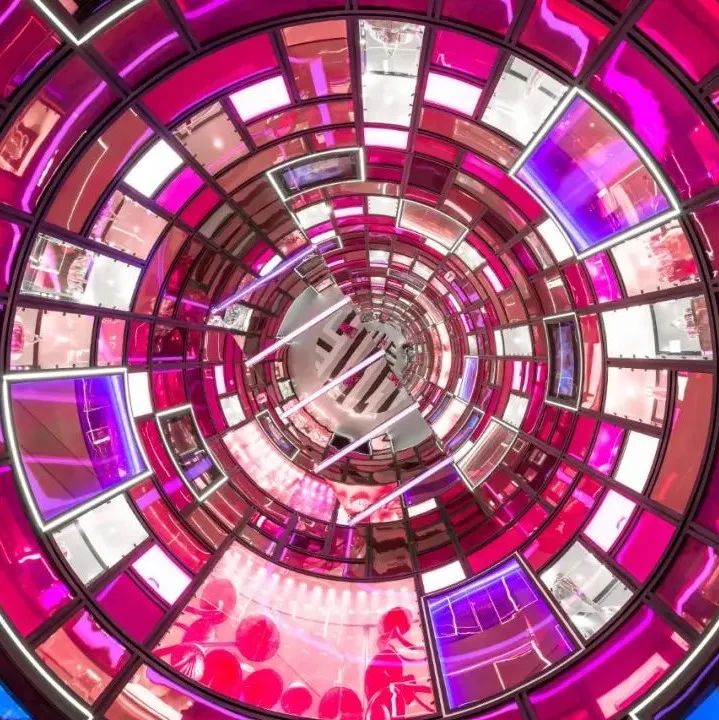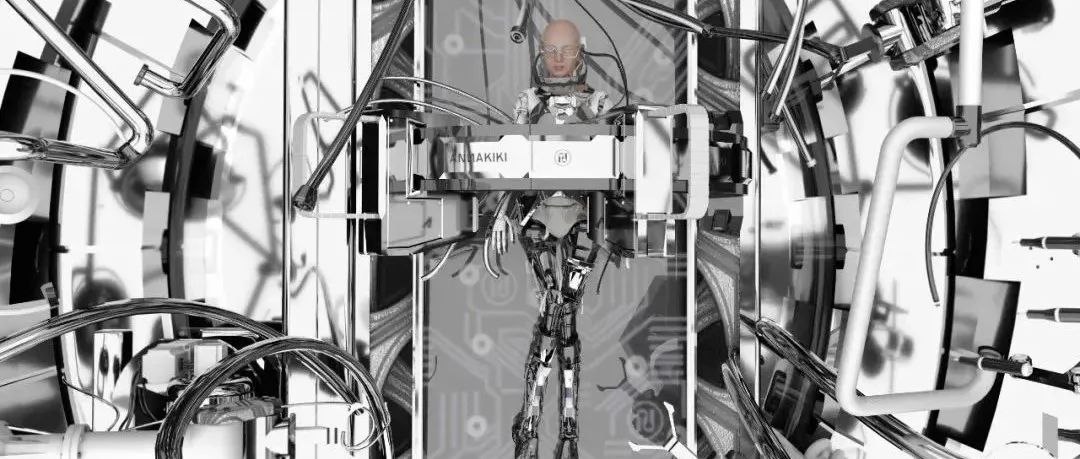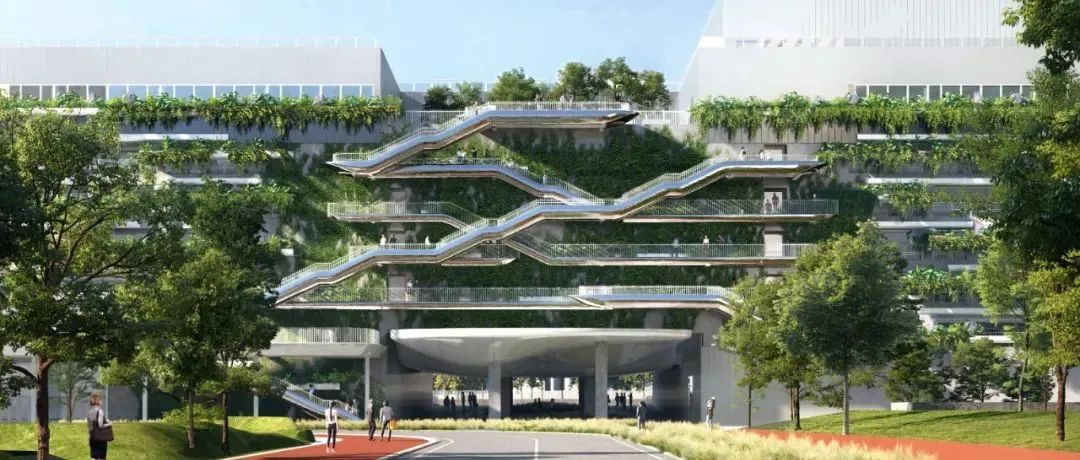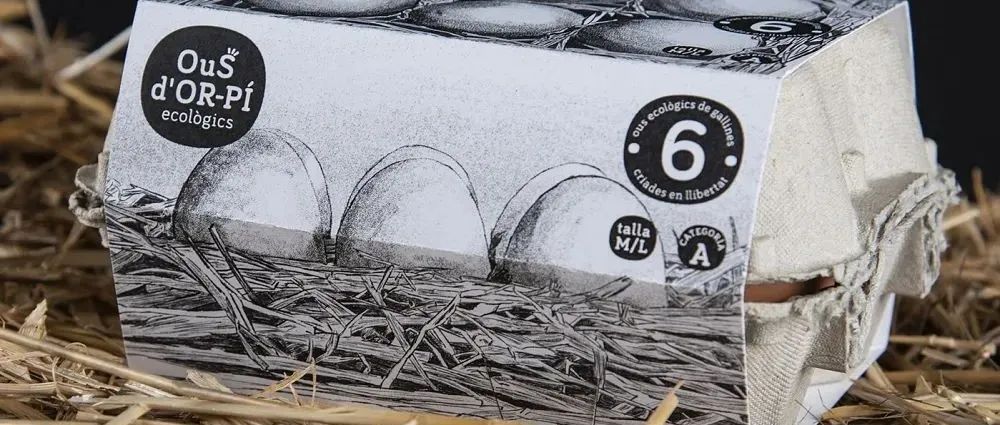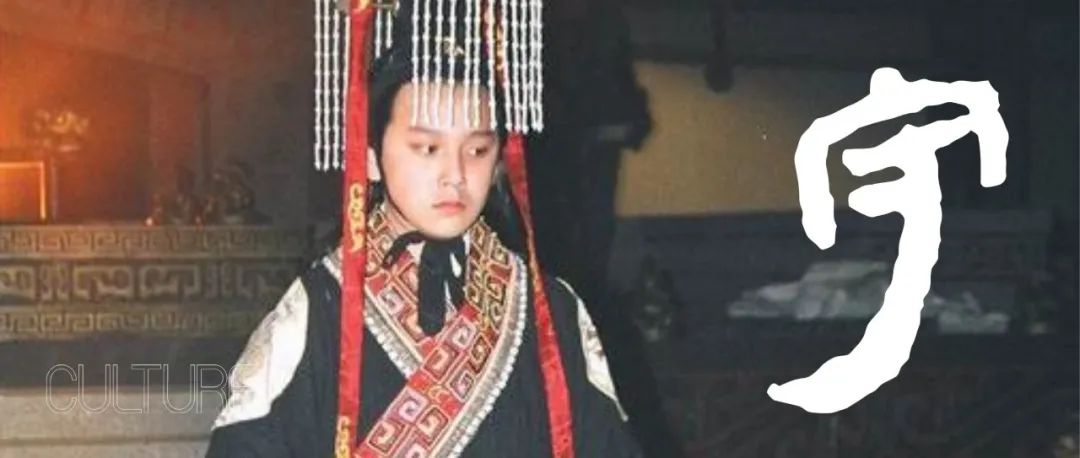Our tongue-in-cheek approach – a shopaholic’s dream – transformed this 20-year old department store into an ‘art mall’ worthy of the K11 brand’s portfolio.
A huge success since opening, K11 Wuhan in China proves that bricks-and-mortar retail can thrive with the right amenity-driven design, an inherent sense of fun and an eye on the future.
Verticality was one of the driving ideas behind the retail planning, encouraging visitors to go upward and explore. We achieved this by strategically placing vertical landmarks as well as floor specific landmarks throughout the mall, and also connecting to the adjacent mall via an external bridge.
And in line with K11’s approach to having the mall be the star attraction rather than the stores with every inch of space being used, we’ve designed the mall to have an ‘Easter egg’ type of surprise in every corner.
Three spectacular, interconnected circular chambers with retail stores wrap around the outside, where people can experience products as ‘masterpieces’, and shopping as a series of exciting discoveries.
A pink accessories chamber in a museum-style setting with displays towering up to the mirrored ceiling makes visitors feel like they’ve stepped into a space that extends into infinity.
The five-storey yellow toy chamber draws on elements of amusement parks and playgrounds and the fantasy many children have of living in a toy factor.
The sci-fi-inspired blue technology chamber lets visitors get lost in a world full of their favourite tech products, with pop-up stores and seasonal themes taking over the space at different times of the year.
Hassell also designed the landscape architecture for the outdoor area and the mall is also studded with artwork from China and abroad, part of the signature K11 philosophy.
At the time of opening, more than 95 percent of the stores had already been leased, and the tenants include a slew of high-end and boutique brand flagship stores, 35 percent of which are new to Wuhan and Central China.
Q&A WITH THE K11 WUHAN ART MALL DESIGN LEADERS ANDREW YIP AND HASSELL GLOBAL RETAIL SECTOR LEADER, CARRIE HO
Q: What has the feedback been from our client K11 and visitors to the mall, since it opened in late 2020? What did you learn from the project, looking back now?
Andrew Yip: The feedback’s been amazing, both from K11 and other developers! The design of the mall is unique - people are still talking about it even a year after its opening. They love the unexpectedness because retail malls don’t typically have such bold interventions, even those in the K11 portfolio. There’s also the richness of discovery, because every time people visit K11 Wuhan, there’s another ‘Easter egg’ to be found on every level and in every corner. The most important lesson has been to not be afraid to get out of our comfort zone for the right type of project.
Q: Where do you see retail experiences heading in the next years, especially in China?
Carrie Ho: I predict more multi-function driven developments, especially incorporating digital entertainment and experiences. Metaverse is a hot topic right now, and I believe retail will fully integrate into this virtual world (a topic I love talking to clients about). On the other hand, people are more conscious than ever about the environment and sustainable living. Covid-19 has driven more people to be willing to pay more in order to improve their quality of living. So, I also see the integration of green environments into retail spaces and the sustainable design of these developments as being crucial for us to address as designers.
Q: What are some of the most important factors to consider when undertaking retail planning and strategy? What are your clients looking for?
Carrie Ho: Retail planning is like putting together a puzzle in a multi-level space, and it’s very satisfying when we’re able to solve problems and bring all the pieces together in a logical order. A smooth circulation of visitors from the outside to the inside is important, as well as providing easy paths within the retail space. The first impression visitors have is also very important, because it sets the tone of the brand. The higher up you go in retail developments, the harder it is to bring people there, so store sizes and thematic destinations need to be identified early in the planning stages.
Q: Are there any particularly interesting projects you and the team are working on at the moment that you can talk about?
Carrie Ho: We’re currently working on a few boutique lifestyle retail malls, located across China including Hong Kong, and interestingly they integrate health, nature and community. We’re also doing some large scale retail developments as well as airport retail, designing experience-driven environments that cater to specific types of consumers. In all of our projects, we integrate technology and smart devices, future-proofing the spaces and businesses.
Q: Projects like K11 Wuhan are highly conceptual – where do you draw inspiration from? And what inspires you as a designer in general?
Andrew Yip: The inspiration for K11 came from a multitude of places – everything from art such as Frank Stella’s paintings, art installations to graphic design and movies. Every project is different and I love the process of figuring out solutions that clients love and that our team at Hassell are proud of putting their names behind.
CLIENT
New World China Land (Wuhan)
LOCATION
Wuhan, China
STATUS
Completed
YEAR
2020
SCALE
43,000 sqm
DESIGN TEAM (INTERIOR)
Andrew Yip, Carrie Ho, Hiko Siu, Jessica Sandford, Cyu Cheung, Natalie Cheng
IMAGERY
Dirk Weiblen
See more Hassell retail projects.
本文来自微信公众号“Hassell”(ID:Hassell_studio)。大作社经授权转载,该文观点仅代表作者本人,大作社平台仅提供信息存储空间服务。


